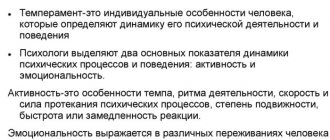Where does it come from?
It is not innate, but is developed during life. Psychological traumas received in childhood do not always leave behind mental pain, fears, uncertainty, etc. Sometimes they are very hardening.
Having coped with something at an early age, a person becomes capable of more powerful blows of fate. Which he will not only withstand, but will also benefit from them, for example, by learning something that will advance his development.
Such trauma can be the divorce of parents, their death, frequent moves, changes in kindergartens and schools. The occurrence of serious diseases not only in the child, but also in adults who are dear to him or live nearby. Even financial difficulties can have a positive impact on the ability to withstand stress and find a way out of difficult situations.
Not only difficulties strengthen
But the presence of difficulties in a child’s life does not necessarily help him survive in the future; the support of his family can be the foundation on which he will rely in the future. Even if they are no longer alive.
Introjects, that is, statements, thoughts, ideas received from significant people, can “live” deep inside in the depths of the subconscious almost until the end of his days. Just remember, when you are trying to make a decision, does it happen that, for example, your mother’s voice appears in your head? And when you want to do something, do you see your grandmother’s face before your eyes, looking reproachfully?
This is what introjects are. Sometimes they help a person survive and develop, and sometimes, on the contrary, they hinder him, limiting and stopping him.
Resilience is also influenced by the recognition of relatives that their child is special, possessing some kind of talent and abilities. As a last resort, accepting him for who he is.
Accordingly, it is more difficult for those who did not feel the support of loved ones to cope with life’s troubles. He did not understand and still does not understand the meaning of his existence. Didn't receive attention or parental involvement in life.
In such cases, self-esteem tends to decrease. And, as you know, individuals who do not believe in their strengths are unlikely to take risks and check whether it really is so, or they are still mistaken and were afraid in vain.
n1.doc
2 The relationship between resilience and other positive personality characteristics
- Feeling connected.
This concept, developed by A. Antonovsky, characterizes the potential for healthy development and psychological stability (see:
Osin,
in press). If, however, the sense of connectedness is based on understanding and acceptance, then resilience is more about turning difficulties into advantages through more proactive and active intervention in events. - Optimism.
Modern psychology is dominated by two approaches to understanding optimism. One of them considers optimism-pessimism as a generalized disposition (C. Carver, M. Scheier), and the other as an attribution style, a way of explaining current events (M. Seligman). Like resilience, optimism gives a person self-confidence and provides a sense of support. On the other hand, effective coping with stressful circumstances presupposes their adequate assessment, with which expressed optimism may be inconsistent.
{ Maddi ,
( Maddi , Hightower ,
- Self-efficacy.
Self-efficacy, or confidence in one's ability to perform a particular activity
( Bandura ,
1977), has often been correlated with the control component of resilience.
However, resilience is a general disposition, whereas self-efficacy is specific to a particular activity. General self-efficacy, as the sum of the self-efficacies experienced by a person in various types of activities, is indeed close to the control component, but its relationship with involvement and risk taking remains unclear ( Maddi , Harvey ,
2005). - Resilience
.
Distinguishing this concept from resilience, Muddy notes that resilience is related to behavioral reactions, being rather a possible consequence of resilience as a personal disposition. A recent book by S. Muddy and D. Khoshaba is called Resilience in Action; The authors characterize sustainability as a problem, or more precisely, a problem area, and resilience as a specific approach to solving this problem, an answer to the question about the mechanisms of sustainability ( Maddi Khoshaba
2005
5. Religiosity.
( Maddi , b ), 6. Big Five scales. ( Sansone et al . Linking resilience to environmental variables { Maddi et al . ( Maddi , Hess , ( Golby , Sheard , ( Sansone et al . , ( Maddi et al .
Research by Salvatore Maddi
Susan Cobase was the first to use the term “resilience.” But it was Salvator Maddi who was remembered for his research, thanks to which he was able to discover three main components of stress resistance, which we will talk about a little later.
Muddy worked at the University of Chicago and around 1975, representatives of the Illinois Telephone Company, which at that time was one of the largest, approached him and his colleagues for help. They, so to speak, had a crisis, which is why the intervention of psychologists was urgently needed.
In those years, the US government decided to tighten laws directly in the field of telecommunications. This meant that the managers of these companies had to take the extreme step of firing almost a quarter of the entire staff.
The law was adopted a year before its mandatory implementation, which left employees in an extremely unpleasant state. They felt confused and horrified because they did not know by what criteria the selection would be made. That's why each of them was under threat of dismissal.
Just imagine the level of stress they had to endure for 12 months. Afraid of taking an extra step to the side or making the slightest mistake.
Content
- 1 Description of the technique
- 2 Theoretical foundations
- 3 Development 3.1 Original methodology
- 3.2 Adaptation by Leontiev and Rasskazova
- 3.3 Modification of Osin and Rasskazova
- 3.4 Modification of Alfimova and Golimbet
- 4.1 Original method
- 6.1 Adaptation by Leontiev and Rasskazova 6.1.1 Calculation of raw points
- 6.2.1 Calculation of raw points
- 6.3.1 Calculation of raw points
- 6.4.1 Calculation of raw points
- 8.1 Form version of Leontiev - Rasskazova
Results
Muddy studied approximately 450 managers at this company. He assessed their condition not only according to psychological criteria, but also medical ones.
As a result, he found out that about 300 employees had suffered greatly in terms of health and emotional well-being. There is Hans Selye's concept of stress, which is that life's troubles and experiences harm the body, causing premature aging and a number of diseases. So, with the help of observations, Salvatore was once again able to confirm this concept.
This part of the employees had difficulties in family, friendly, and collective relationships. They became more irritable, which affected not only the communication process, but also the effectiveness of their work. Productivity fell, and along with it, health deteriorated.
Many cases of cancer, migraines, and blood pressure problems have been recorded. There have been attempts to commit suicide in order to get rid of pain and persistent anxiety.
And the remaining third, on the contrary, showed an increase in activity. Their relationships with loved ones only strengthened, their well-being improved, and even chronic diseases ceased to bother them.
They became more productive than before and put forward a number of valuable ideas that had a beneficial effect on work efficiency. Even if they had to leave the company, they found themselves elsewhere, even to the point of starting their own business.
This point was extremely interesting to researchers. After all, in fact, being in the same conditions, people behaved differently. Some were victims of circumstances, having lost a lot, while for others, difficulties and uncertainty became the root cause of their success.
Literature
- Leontyev D.A., Rasskazova E.I. Vitality test. Methodological guide to a new method of psychological diagnostics of personality with a wide scope of application. Intended for professional psychological researchers and practitioners. - M.: Smysl, 2006.
- Osin E.N., Rasskazova E.I. The Short Version of the Resilience Test: Psychometric properties and application in an organizational context. Bulletin of Moscow University. Episode #14. Psychology. 2013. No. 2, pp. 147-165
- Osin E.N. Factor structure of the short version of the Resilience Test. Organizational psychology. 2013. T. 3. No. 3. pp. 42–60
- Alfimova M. V., Golimbet V. E. Russian version of the short resilience scale. Social and clinical psychiatry 2012, vol. 22, no. 4, pp. 10-15
Components
Having studied the personal characteristics of each employee, Salvatore was able to discover the main components of resilience, which will certainly help not only survive in difficult circumstances, but also significantly succeed and benefit from them. So what did he notice?
Involvement
This concept means the “inclusion” of a person in various processes. If you observe something from the outside, over time you will get the feeling that life is passing you by. There will be a feeling of total loneliness and self-esteem will decrease.
Because a person who refuses to actively participate in what is happening around her will gradually come to the conclusion that she is not capable of anything.
The one who almost always acts, and does not observe from the outside, receives pleasure and saturation from his activity. Paradoxically, being in the center of events, he is better protected from the negative effects of stress than others.
Do you know why? Because when we find ourselves in a whirlwind of events, we experience various emotions, we need to do something, make decisions, etc. We're in the process. There is simply no time to worry and fantasize, imagining horrors.
Control
A person who understands that he himself is responsible for his life and its quality believes that he is able to positively influence certain events. So that they bring him the desired result. If the situation does not lend itself to his influence, he does not give up. And he accepts it and tries to adapt to new conditions. Looks for resources and advantages in what happened.
In the opposite case, a person experiences a state of helplessness before any difficulty, which over time affects his behavior, forming the so-called “learned helplessness.”
That is, for example, he is able to change something, but does not take any steps to start acting, because he is convinced in advance of his powerlessness. And then he suffers under completely simple circumstances that anyone else would overcome in an instant.
Riskiness
A person who is able to take risks believes that any events in her life, even unpleasant ones, are an experience that allows her to develop and become stronger, more aware, and more resilient.
If she is afraid to take risks, take the first step or change something, she is doomed to degradation. Since it is impossible to gain new experience by acting in the same way. As the saying goes, “he who doesn’t take risks, doesn’t drink champagne.”
Yes, refusing to act when there are no guarantees of a successful outcome of events allows you to take care of your safety. But, on the other hand, by not deciding to act, you can miss a large number of opportunities.
45-point test
When passing the task, the test taker must choose the correct answer at his own discretion:
- Yes;
- rather yes than no;
- More likely no than yes;
- No.
Test questionnaire tasks:
After passing the test tasks, you need to correctly calculate your points: • for direct statements (answer “no” - 0 points, “more likely yes than no” - 1 point, “more likely no than yes” - 2, “yes” - 3 ); • for opposite statements (the calculation is the other way around, where “no” is 3 points, and “yes” is 0). Here is the key to calculating test results:
Scores are then calculated by key and summed to determine resilience. After which you can evaluate yourself according to 3 components and determine what your resilience is. Compare with statistical averages and standard deviations.
You need to know: S. Maddi believed that for a full life and functioning of an individual, good resistance to stress, all 3 components of vitality separately, as well as their total component, are important, but any result must be considered within the framework of a specific individual.
Methods for increasing resilience
So, as you can see, the above character traits and behavioral styles are formed throughout a person’s life, depending on the experience he has acquired and the conditions in which he finds himself.
And even if for some reason you did not have the opportunity to train your stress resistance, do not despair. We know its main components, and accordingly, we can change if we wish.
Focus on benefits
When some kind of trouble occurs, it is quite natural that, being upset, a person is not able to think about the opportunities that it opens up for him. Over time, having cooled down and resigned himself, if he never finds the strength to discover them, he will “get stuck” in one place, deprived of the chance to move forward and become stronger and more successful.
When you are overcome by unpleasant feelings, first of all, try to express them constructively, that is, without destroying yourself and others. For example, when angry, hit a pillow, run, shake your abs. When you are sad, cry and complain to a loved one.
Then, after letting off steam, “turn on” rationality and creative, non-standard thinking. Take a notepad and write at least 5 points in which you indicate the advantages and opportunities that the “trouble” that has arisen provides.
We live the way we approach life. If we are able to notice and concentrate only on the bad, then we are unlikely to be considered happy people and experience peace of mind.
Charity
Life's troubles can plunge you into despair. When it seems that no one in the world suffers as much as I do. But if you shift your focus just a little from your own personality and look around, you can understand that there are those who need more than me. And if you try to help them, your own difficulties will lose their scale and globality.
For example, most billionaires, even if they were not yet famous, were involved in charity work. Some were so poor that they slept on the floor, for lack of a bed, or went hungry. But still, despite this, they helped others and gave their last.
Flexibility
Learn to be flexible. Principles are, of course, good; they are a support for each of us. But if you follow them unswervingly, ignoring the fact that they are already doing more harm than good, you can one day “break”, unable to withstand the pressure.
You should adapt to new conditions, and not hold on to the old, hoping that it will return someday. The modern world is developing so quickly that we cannot let down our guard.
Change your thinking, every time the thought “I can’t” arises in your head, remove the “not” part and immediately take action. Because limitations are only in our heads. And only we can remove them if we believe in ourselves and our strengths.
Responsibility
Living a relaxed life, doing nothing and at the same time getting everything you want is, rather, only possible in childhood or if you manage to organize a “parasitic” way of existence for yourself.
A mature person is responsible for his actions. Even if it doesn't always work out. And if you want to develop resilience, accept the fact that you need to make choices every day, from what to cook to choosing a life partner or profession. How we feel and in what conditions we live depends on our choices.
If I take action and realize my dreams, because I understand that I am responsible for my own happiness, I have a greater chance of becoming successful. Than someone who simply expects that one day the stars in the sky will turn out well or that a good wizard will come and solve all the problems.
Fighting bad habits
A person who has a tendency towards addictive behavior can hardly be considered resilient. If you smoke, drink, are fond of gambling and virtual games, etc., then no life guidelines will help you maintain your health and peace of mind.
At the slightest stress, a dependent person harms his body, instead of coping with it and seeing prospects.
Therefore, declare a fight against your bad habits, you can cope without them.
Relaxation
In the life of every person, situations arise every day that cause excessive stress. And so that it does not have time to cause damage, it is important to be able to relax and release it.
Learn different breathing techniques, do something you enjoy during such moments, and practice yoga. Chat with nice people, go for a run, whatever you want, but be sure to relieve stress. Otherwise, it will remain in your body and cause discomfort, both physical and emotional.
Healthy lifestyle
Help yourself by drinking enough water and foods containing the necessary substances for the quality of life of the body. Sleep for the required amount of time and rest.
Then you will feel energy, desire, motivation to act, and not apathy and powerlessness. You will accumulate resources and not waste them.
Plan your activities
Most people manage to achieve success thanks not only to their willingness to take risks, but also to the ability to correctly manage their time, energy and other resources. Be sure to start a diary in which you will keep track of your goals and prospects. Plan and prioritize.
It’s better to spend 10 minutes writing in a notebook than on fears and worries that only limit you.
You can learn more about how to fill out and maintain a diary here.
Phoenix risen from the ashes
In the ancient Greek tradition there are different interpretations of the myth of the Phoenix. According to one version, the Phoenix, foreseeing its death, burns itself in the nest. However, from its ashes a new bird emerges. Among the Slavs there were widespread legends about the Firebird, as well as about Finist, who symbolized immortality. In the Christian tradition, this is the image of Christ, who triumphs over darkness and death, and then is resurrected.
The phoenix symbolizes the image of change, when a person metaphorically dies and is reborn again. The image of this bird is archetypal, and therefore can illustrate the specific circumstances of representatives of any era or nationality. Every person periodically has to be “reborn from the ashes.” For some, such circumstances occur several times in their lives, for others, “rebirths” happen with enviable frequency. These are betrayals of friends or death of loved ones, separations, unwanted moves. Such events are always a bitter reason for complex feelings and emotional stress.
Sometimes such situations provoke a person to mobilize energy - as if fate itself is challenging him. “I can get through this,” “I can handle it.” On the other hand, after a while they may give up. And then, instead of enthusiasm and the desire to fight the storm of life, another idea may come - “Why is this happening to me?”
Relationships with people
Muddy also found that people who are resilient tend to maintain supportive relationships with others. Often in a difficult situation there is a desire to withdraw into oneself and stop communicating. It simply becomes “no time for all this.” However, it takes a lot of energy to internally experience a difficult situation.
But if you manage to continue communication, then the person can receive the necessary support. And then it may be much easier to overcome difficulties. Communication with close relatives is not always understood here. This could also be the help of a psychotherapist or doctor who has specific knowledge and can help get out of difficult circumstances.
Automatic reactions in situations of stress
Often, in a stressful situation, we resort to habitual patterns of behavior that are used “automatically.” For example, a small child wants to get a toy he likes in a store. He begins to become hysterical, scream, threaten that he will not go with his parents from the store. Perhaps he was once able to get what he wanted using this strategy, and now he uses it automatically. Although in reality it makes the situation even worse. After all, parents can also punish the child.
Another example: the husband did not call on time because he was extremely busy with work matters. Even on the threshold, his wife begins to make trouble, uttering everything she thinks about him. And although this strategy is completely unproductive and aimed at destroying relationships, it is used by a woman simply because it is convenient and familiar.
However, there are also behaviors that can lead to a positive outcome of the situation. Effective options can be seen if you at least briefly look at the situation differently and apply a creative approach. It will be possible to continue to rely on new models of behavior. They allow a person to increase self-esteem, become more emotionally balanced and calm.
Types of coping
A resilient person is able to survive difficult situations without harm to physical and mental health. To develop this quality, it is necessary to master coping strategies that allow you to overcome difficult life situations. The name “coping” comes from the English verb “to cope,” which means “to overcome.”
Coping strategies are divided into effective and ineffective. The first category includes:
active actions aimed at solving a problem the ability to see additional opportunities in a difficult situation the ability to navigate according to one’s own value system the ability to accept responsibility, as well as one’s own ability to somehow influence the situation the ability to draw a line between situations that require acceptance and situations that require action.
Ineffective coping strategies typically include:
ignoring difficulties distractions - computer games, TV shows, alcoholism anxiety and worry about the future without any active action self-flagellation











